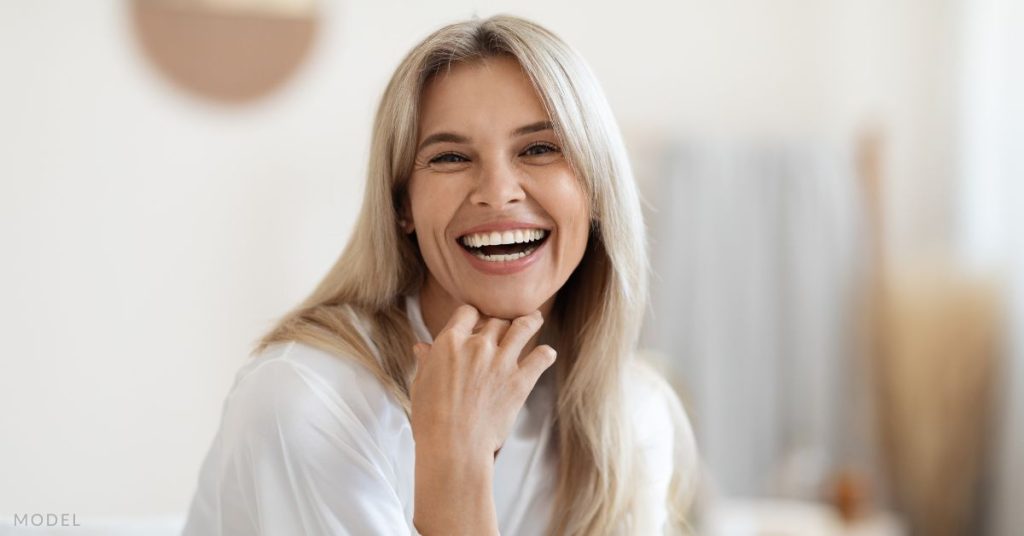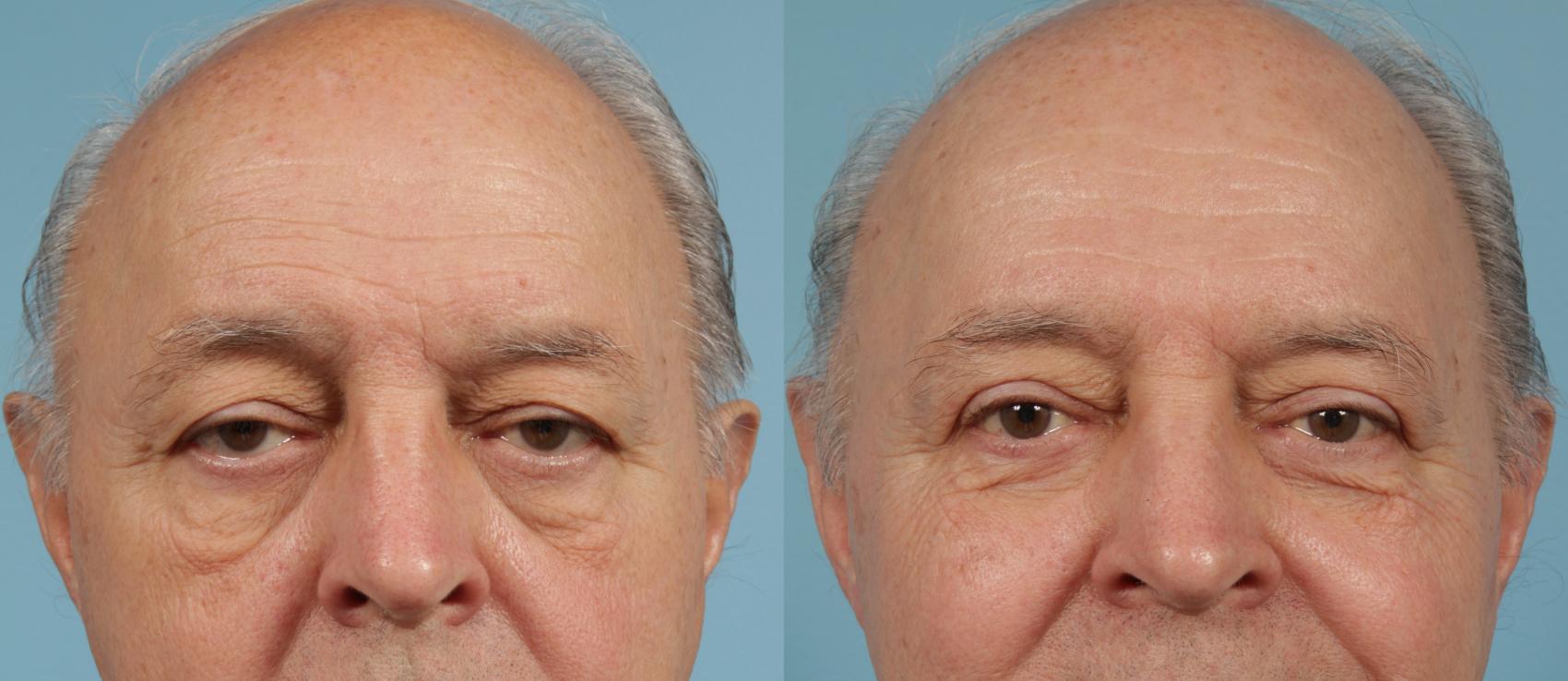Eyelid surgery, or blepharoplasty, rejuvenates the eye area by correcting upper lid droopiness and lower lid puffiness. However, not every blepharoplasty procedure is the same—in fact, there are multiple varieties under the eyelid surgery umbrella. We’ve put together this guide to the different types of eyelid surgery to help our patients understand which choice might be best for them.
Upper and Lower Eyelid Surgery
Unless you have a specific concern associated with only one half of the eye, your surgeon may recommend addressing both eyelids for maximum rejuvenation.
Dr. Mustoe and Dr. Sinno have innovated their approach to blepharoplasty using local anesthesia with light oral sedation. Their gentle, skillful technique accelerates healing, minimizes discomfort, and emphasizes the eye’s natural shape for the most flattering results.
As you can see from the photos below and our gallery of before and after photos, subtle corrections to the skin around the eyes significantly brighten and “open” the face.
Upper Eyelid Surgery
Upper eyelid surgery addresses the hooding caused by sagging or excess skin above the eye. This procedure involves a small, fine incision hidden in the natural crease of the eyelid that extends to the corner of the eye.
Your board-certified plastic surgeon will carefully remove the extra eyelid skin and adjust the underlying tissues and muscles. The result is a cleaner appearance and smoother, younger-looking skin around the delicate eye area.
Dr. Mustoe and Dr. Sinno pride themselves on honoring the eye’s natural shape so that the patient’s transformation is noticeable yet still recognizable.
Lower Eyelid Surgery
Blepharoplasty on the lower eyelid corrects under-eye bags, tear troughs, and droopy, wrinkled skin. Dr. Sinno and Dr. Mustoe use a transconjunctival technique that places the incision inside the lower eyelid, avoiding an external incision and preserving the eyelid’s original shape.
During lower eyelid surgery, fatty deposits can be removed or repositioned for a more even and smooth look. Likewise, fat transfer can be used to naturally restore volume to the tear troughs, which may have lost volume due to age. This approach is preferable to dermal fillers as it does not require touch-up treatments every few months.
When droopiness is a concern, plastic surgeons can make another incision (hidden beneath the lash line) to tighten the muscle and excise the loose skin. Like upper eyelid surgery, postoperative scarring is virtually undetectable.
Cosmetic Eyelid Surgery
Both upper and lower eyelid surgery can be performed for aesthetic or functional reasons. Cosmetic eyelid surgery addresses a patient’s aesthetic concerns that do not impede their vision.
This type of blepharoplasty helps patients look younger and more well-rested and produces a smooth, shapely eye area. Because it is an elective procedure, insurance does not usually cover it.
Functional Eyelid Surgery
Functional eyelid surgery, by contrast, requires surgical intervention to correct vision problems associated with overhanging skin. Your insurance will more likely cover this procedure since it satisfies a medical need.
That isn’t to say that functional eyelid surgery can’t produce the same type of aesthetically pleasing results as a cosmetic procedure can. Trimming and tightening excess skin and repositioning the tissues, fat, and muscles all contribute to a rejuvenated look—in addition to restoring the patient’s full range of vision.
Other Options
Outside of blepharoplasty, patients have other options (both surgical and nonsurgical) to refresh the eye area. Two of the most common include a brow lift and BOTOX®.
Brow Lift
This surgical procedure raises a low brow line and tightens loose forehead skin, combatting wrinkles and a heavy, drooping effect that may exacerbate sagging or puffiness in the upper eyelids.
As we cover in our related blog post, an easy way to tell whether a brow lift or upper eyelid surgery would be more appropriate for you is to raise your eyebrows while looking in the mirror. If your eyelids still sag, blepharoplasty is likely better. If raising your eyebrows corrects the problem, a brow lift may be the superior option.
Many patients choose to undergo both procedures simultaneously to revitalize the upper face. An elevated brow, smooth forehead, and eyes that look open and rested create a significantly more youthful appearance.
BOTOX®
Precisely placed injections of BOTOX around the brow line can relax the muscles and naturally elevate the eyebrows, leading to a more visible upper eyelid. BOTOX can also smooth crow’s feet at the corners of the eyes and address lower eyelid wrinkles and puffiness to rejuvenate the eye further.
However, the results of BOTOX are temporary and require maintenance treatments every 3 to 4 months to maintain results. While BOTOX targets mild-to-moderate cosmetic concerns in the eye area, it cannot achieve the same results as surgery and may not be enough on its own. If you are interested in revitalizing your upper face and want to know how blepharoplasty can help, please request a consultation or call us at
(312) 788-2560.







Leave a Reply